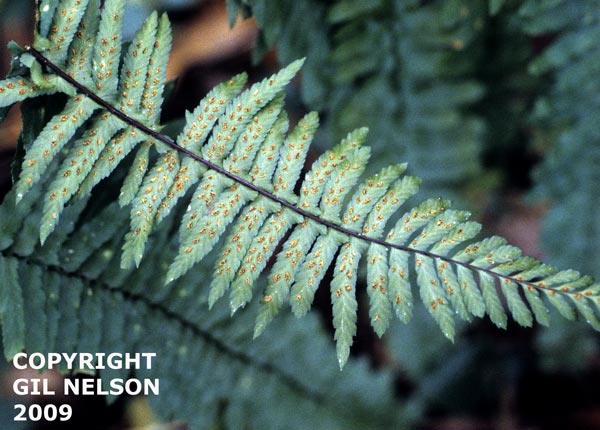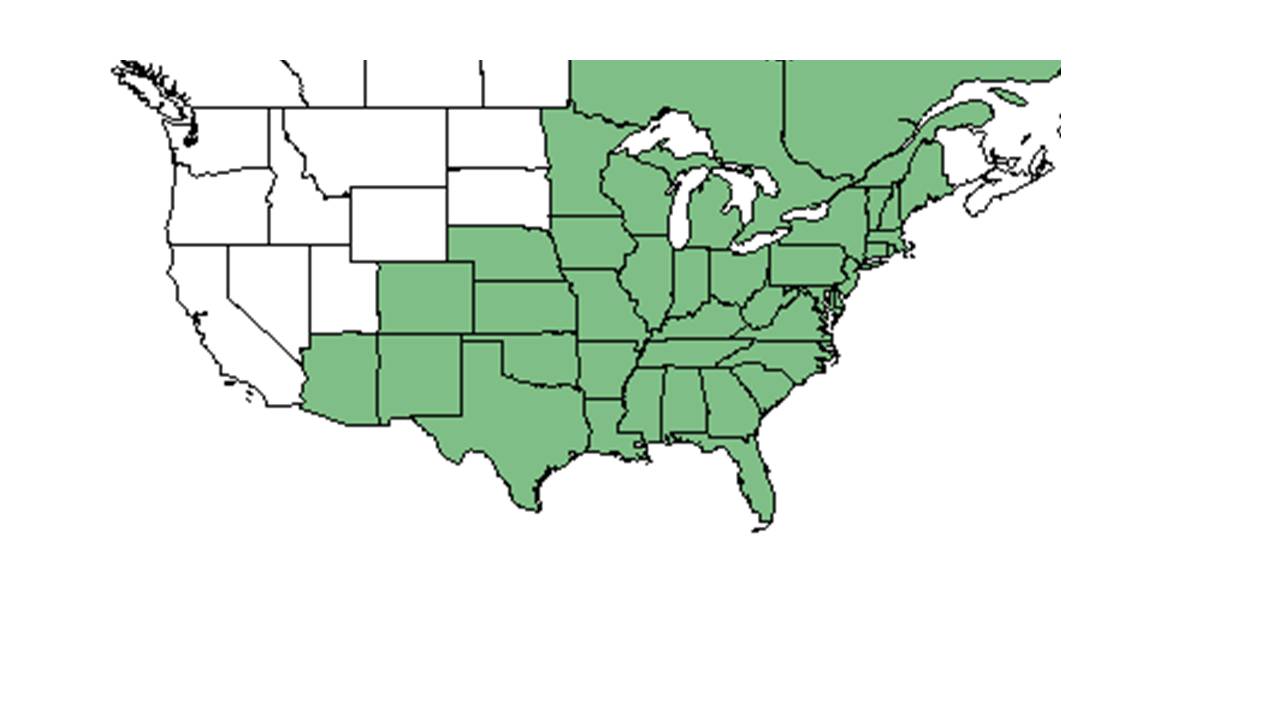Difference between revisions of "Asplenium platyneuron"
(→Ecology) |
|||
| Line 45: | Line 45: | ||
===Fire ecology===<!--Fire tolerance, fire dependence, adaptive fire responses--> | ===Fire ecology===<!--Fire tolerance, fire dependence, adaptive fire responses--> | ||
It does well in fire dependent environments.<ref name="fsu"/> However, one study found that ''A. platyneuron'' had little to no change in frequency in response to prescribed fire.<ref name= "Taft">Taft, J. B. (2003). "Fire effects on community structure, composition, and diversity in a dry sandstone barrens." Journal of the Torrey Botanical Society 130: 170-192.</ref> | It does well in fire dependent environments.<ref name="fsu"/> However, one study found that ''A. platyneuron'' had little to no change in frequency in response to prescribed fire.<ref name= "Taft">Taft, J. B. (2003). "Fire effects on community structure, composition, and diversity in a dry sandstone barrens." Journal of the Torrey Botanical Society 130: 170-192.</ref> | ||
| − | |||
| − | === | + | ===Pollination and use by animals===<!--Herbivory, granivory, insect hosting, etc.--> |
| − | + | ''Asplenium platyneuron'' is fed on by two aphids: ''Amphorophora ampullata'' and '' Idiopterus nephrelepidis.''<ref name="illinois">[[http://www.illinoiswildflowers.info/grasses/plants/eb_spleenwort.htm]]Illinois Wildflowers. Accessed: April 1, 2016</ref> | |
<!--===Diseases and parasites===--> | <!--===Diseases and parasites===--> | ||
Revision as of 14:46, 10 June 2021
| Asplenium platyneuron | |
|---|---|

| |
| photo by Gil Nelson | |
| Scientific classification | |
| Kingdom: | Plantae |
| Division: | Pteridophyta - Ferns |
| Class: | Filicopsida |
| Order: | Polypodiales |
| Family: | Acanthaceae |
| Genus: | Asplenium |
| Species: | A. platyneuron |
| Binomial name | |
| Asplenium platyneuron (L.) Britton, Sterns & Poggenb. | |

| |
| Natural range of Asplenium platyneuron from USDA NRCS Plants Database. | |
Common name: Ebony Spleenwort
Contents
Taxonomic notes
Synonyms: none.[1]
Varieties: none.[1]
Description
A description of Asplenium platyneuron is provided in The Flora of North America.
It can be easily confused with Christmas fern (Polystichum acrostichoides), however, the stem of Christmas fern is green and scaly and the spores cover a back of a leaflet.[2]
Distribution
It is one of the most common and widespread of the eastern North American spleenwort.[3] Listed as critically imperiled in Arizona and Colorado.[4]
Ecology
Habitat
Habitats include rocks, rotting logs, swamps, marshes, crotches of hardwood trees, and savannas.[5][6] It also grows in disturbed areas such as fallow fields and near field edges. It does well in moist, loamy sand in fully shaded environments to areas with full sun.[6]
Associated species include cypress, moss, magnolia, oak, and beech.[6]
Phenology
Reproduces with proliferating buds that form near the base of the stipe and when covered with soil, can grow into new individuals as the frond that bore them dies. Also propagates by spores and can hybridize with other spleenworts.[7] It has been observed flowering in February.[8]
Fire ecology
It does well in fire dependent environments.[6] However, one study found that A. platyneuron had little to no change in frequency in response to prescribed fire.[9]
Pollination and use by animals
Asplenium platyneuron is fed on by two aphids: Amphorophora ampullata and Idiopterus nephrelepidis.[10]
Conservation, cultivation, and restoration
It is listed as a species of special concern by the Maine Department of Conservation, and listed as exploitably vulnerable by the Division of Land and Forests in New York.[11]
Cultural use
Photo Gallery
References and notes
- ↑ 1.0 1.1 Weakley, A.S. 2015. Flora of the southern and mid-atlantic states. Working Draft of 21 May 2015. University of North Carolina at Chapel Hill, Chapel Hill, North Carolina.
- ↑ [[1]]Minnesota wildflowers. Accessed: April 1, 2016
- ↑ Taylor, W. C., R. H. Mohlenbrock, et al. (1976). "Variation in North American Asplenium platyneuron." American Fern Journal 66(2): 63-68.
- ↑ [[2]]NatureServe. Accessed: April 1, 2016
- ↑ [[3]]Daily Press. Accessed: April 1, 2016
- ↑ 6.0 6.1 6.2 6.3 Florida State University Robert K. Godfrey Herbarium database. URL: http://herbarium.bio.fsu.edu. Last accessed: June 2014. Collectors: Loran C. Anderson, Karen MacClendon, R.K. Godfrey, Wilson Baker, R. F. Doren, Roy Komarek, and Jeffrey M. Kane. States and Counties: Florida: Wakulla, Calhoun, Franklin, Leon, and Gadsden. Georgia: Grady and Thomas.
- ↑ [[4]]inaturalist.Accessed: April 1, 2016
- ↑ Nelson, G. PanFlora: Plant data for the eastern United States with emphasis on the Southeastern Coastal Plains, Florida, and the Florida Panhandle. www.gilnelson.com/PanFlora/ Accessed: 25 MAR 2019
- ↑ Taft, J. B. (2003). "Fire effects on community structure, composition, and diversity in a dry sandstone barrens." Journal of the Torrey Botanical Society 130: 170-192.
- ↑ [[5]]Illinois Wildflowers. Accessed: April 1, 2016
- ↑ USDA, NRCS. (2016). The PLANTS Database (http://plants.usda.gov, 25 March 2019). National Plant Data Team, Greensboro, NC 27401-4901 USA.